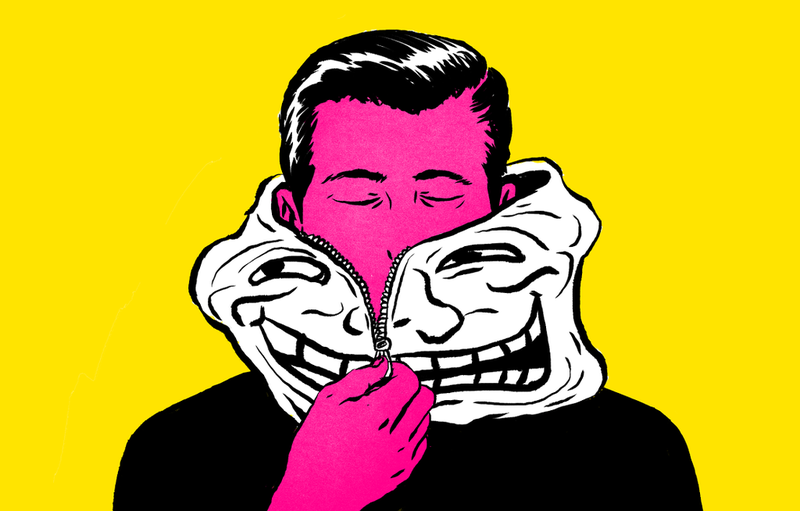
In this brief this essay, I intend to describe how Emma Alice Jane’s article, ‘Back to the kitchen, cunt’: speaking the unspeakable about online misogyny, provides a detailed account of how to unfold, illustrate, and articulate a phenomenon through narrative as a part of methodology. First, I will describe the way in which Jane structures each narrative. Then, I will remark on places Jane could have expanded or explained in more detail, critiques of which I will consider for my own research.
The purpose of Jane’s article is to describe the proliferation of hostile and misogynist rhetoric on online commentary. As a result of widespread media coverage that has debated what methods or interventions could be effective in assuaging online harassment, Jane argues that ‘e-bile,’ a combination of expletives, profanity, and explicit imagery of sexual violence, “must be spoken of in its unexpurgated entirety” despite being sexually explicit or offensive to convey its true hostility and hyperbolic misogyny. Indeed, misogynist trolling messages are often calculated and precise in how they offend. Additionally, Jane suggests that talking about this commentary in a polite way produces the unintended consequence hiding the social and political existence of the behaviour’s proliferation.
Although definitions are efficient tools for readers, the severity and intensity of phenomenon are sometimes not captured by polite explanations. To draw connections between old and new sexualising misogyny, Jane exposes her 15 year archive of sexualised vitriol to fully convey how e-bile targets their hostile imagery toward women. For example, Jane offers messages she received as a journalist to illustrate recurring characteristics of comments that target visible public sphere women anonymously:
“Then there was: You should have good arse fuck lasting two hours every day. That would set you right! You look like a tart desperate for cock or maybe you thing you’re cool or funky?…their authors are anonymous or otherwise difficult to identify; their sexually explicit rhetoric includes homophobic and misogynist epithets; they prescribe all purpose correctives.”
Rather than simply defining e-bile, Jane hides nothing in her examples to build up the conceptual framework of a phenomenon. Jane’s analysis names characteristics in detail. Indeed, the body of Jane’s article is structured in such a way that each section is titled with an excerpt of messages that Jane or one of Jane’s subjects has received. I find Jane conceptual frame work technique effective in helping the reader piece together the characteristics on their own. Jane’s point was driven home when even I felt tempted to not include the worst of the above excerpt. In fact, I cut the last line. The instinctual response to hide intense misogyny and explicit violent sexual imagery of these messages is Jane’s reason and purpose in writing this article. Although I agree that in order to really name the issues with e-bile behaviours and understand how new misogyny is just an adaptation of the old, how can researchers critically look at explicit behaviour while being conscious of not making subjects spectacles and trigger warnings?
As said before, Jane labels each paragraph or section with an excerpt of a of a message received that Jane claims is structured by escalating intensity and severity. For example, Jane provides a comment listed under the Youtube profiles of one her cheer leader subjects of which she calls a “winning entry in shockability stakes: “She gave great blowjobs before her fall, now imagine the pleasure she will bring with out her front teeth”(561). The message seems just as rooted in desire and misogyny as the last messages. Jane could possibly provide a criterion for which she delineates the increasing intensity or escalation of these remarks. In other words, how does Jane decide which are worse? In this context, quantifying the violence of these messages can be problematic. For my own research, I do not intend to quantify violence but perhaps rather than structuring the article around increasing intensity, I can use this narrative method and organize them to focus on key characteristics that are present in all the messages but particularly explicit in specific examples.
Lastly, Jane suggests that that the authors of these anonymous messages get off on having the worst of their messages hidden: “the anonymous or quasi anonymous producers of such discourse are likely to benefit from the fact that their utterances and actions are considered too abhorrent to repeat or discuss in mainstream contexts”(558). However, an argument can be made that the authors also get off on wide exposure. It is not the power in the message we have to hide but the identity of author we must unearth in order to hold authors accountable. Although Jane’s narrative tool in helping readers building a conceptual framework for key terms and concepts is visually innovative, I question the structure of Jane’s narrative building.
In short, what I take from Emma Jane’s article is how to let the reader formulate their own constructions of a term with guidance. Repeated clear examples of a a concept or a phenomenon allow the reader to see repeated traits and characteristics. Further analysis from the writer helps guide the reader to a clearer understanding of what the concept is but the technique does not necessarily persuade to agree. In my own work, I hope to not only use this technique but entertain opposing views within the article to formulate a more dialectic approach.